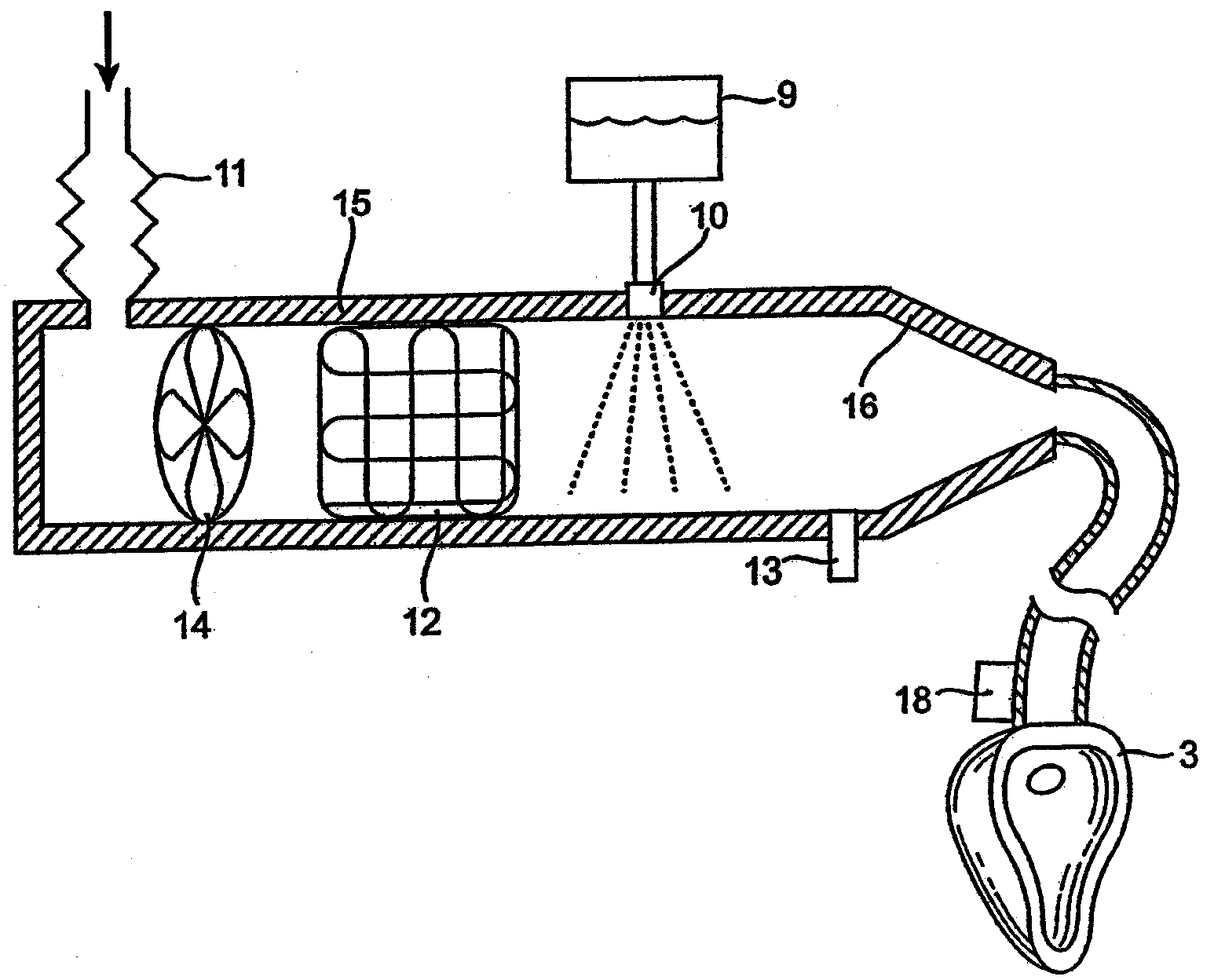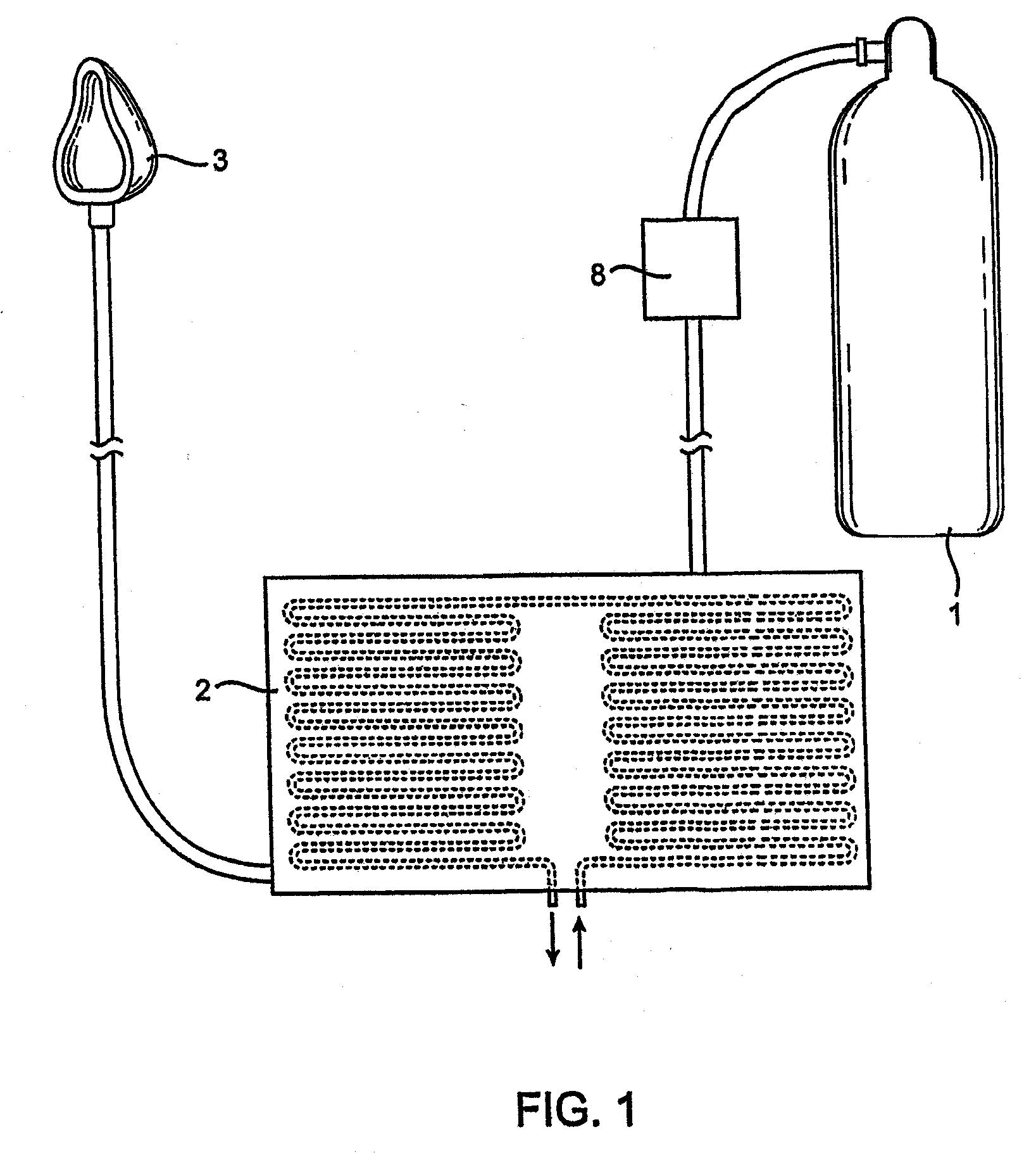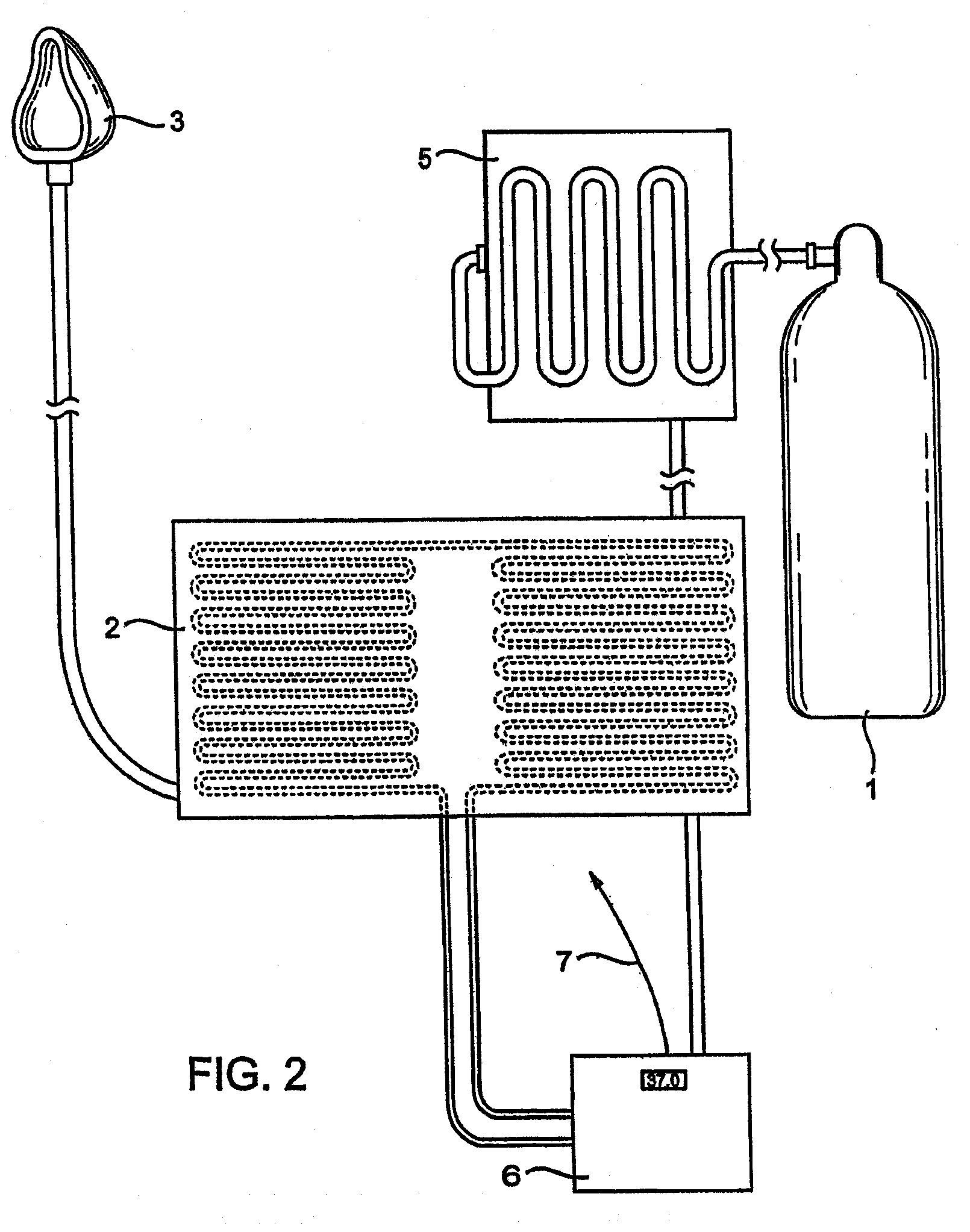Respiratory System for Inducing Therapeutic Hypothermia
a technology of respiratory system and hypothermia, which is applied in the field of respiratory system for inducing therapeutic hypothermia, can solve the problems of increasing heat loss, affecting thermoregulation, affecting thermoregulation, etc., and achieves the effect of increasing the heat transfer ra
- Summary
- Abstract
- Description
- Claims
- Application Information
AI Technical Summary
Benefits of technology
Problems solved by technology
Method used
Image
Examples
first embodiment
[0047]FIG. 1 is a schematic diagram of the apparatus for inducing therapeutic hypothermia using a source of compressed breathing gas and a heat exchanger. The system includes a supply of compressed breathing gas stored in a pressurized container 1. The gas is delivered though a heat exchanger 2 or other heating and / or cooling apparatus to the mask 3 that the patient is using. Optionally, the system includes a humidifier 8 to humidify the gas in order to improve heat transfer.
second embodiment
[0048]FIG. 2 is a schematic diagram of the apparatus for inducing therapeutic hypothermia using adiabatic cooling of a compressed breathing gas as an adjunct to the heat exchanger. The system includes a supply of compressed breathing gas 1 and a heat exchanger 2 where the heat is exchanged with fluid located inside the heat exchanger. The temperature of the fluid in the heat exchanger is changed and monitored by a separate heating and / or cooling device 6. The system includes a device 5 that uses the cold temperature that results from depressurizing the gas to help cool the patient 5. A temperature sensor probe 7 records the patient's temperature and a feedback controller associated with the heating and / or cooling device 6 uses it as feedback to determine the desired temperature of the breathing gas.
third embodiment
[0049]FIG. 3 is a schematic diagram of the apparatus for inducing therapeutic hypothermia that includes a fluid source 9 and a fluid injector 10 for creating ice particles or a frozen mist to enhance the heat capacity of the breathing gas mixture. The fluid source 9 will preferably contain normal saline solution (0.9% NaCl) or any other desired solution, so that it will be isotonic with the patient's blood. Alternatively plain water, e.g. distilled water, may be used. If plain water is used, NaCl may be added to the breathing mixture in the proper amount to maintain an isotonic concentration or administered to the patient orally or via another route. Optionally, the system may be connected to a mechanical respirator 11, particularly for patients who are not breathing spontaneously. The system may use air or one of the specialized gas mixtures described above. The incoming breathing gas is passed through a heat exchanger 12 to cool it to a temperature below the freezing point of the ...
PUM
 Login to View More
Login to View More Abstract
Description
Claims
Application Information
 Login to View More
Login to View More - R&D
- Intellectual Property
- Life Sciences
- Materials
- Tech Scout
- Unparalleled Data Quality
- Higher Quality Content
- 60% Fewer Hallucinations
Browse by: Latest US Patents, China's latest patents, Technical Efficacy Thesaurus, Application Domain, Technology Topic, Popular Technical Reports.
© 2025 PatSnap. All rights reserved.Legal|Privacy policy|Modern Slavery Act Transparency Statement|Sitemap|About US| Contact US: help@patsnap.com



